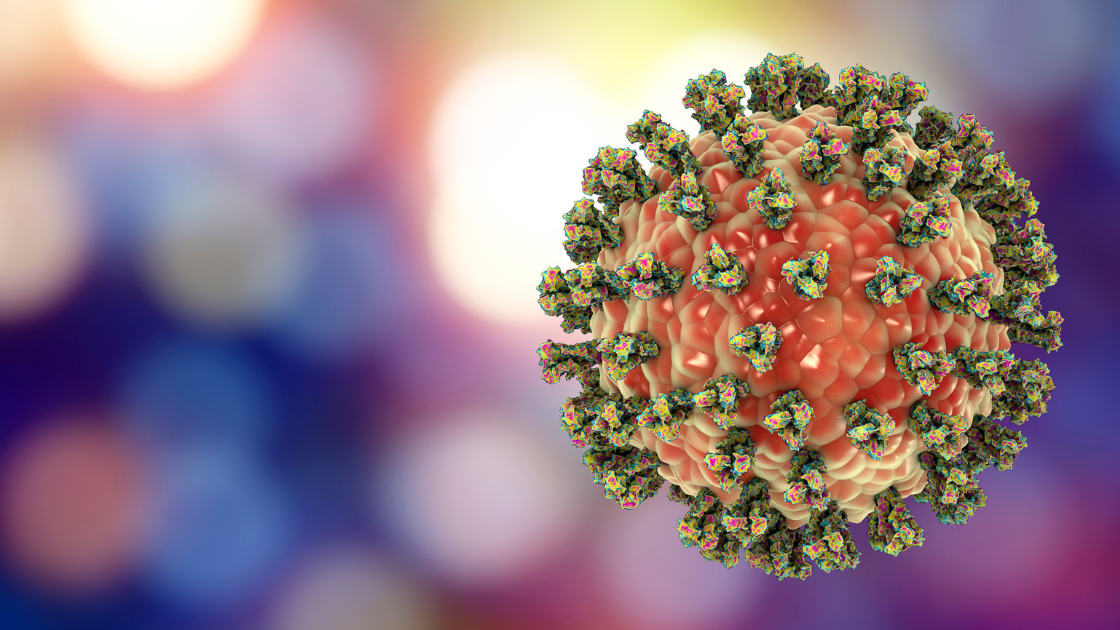Dental Amalgams, Cavitations, and Root Canals and Their Contribution to Chronic Illness
Presented by Immanence Health
Written by Dr. Irina Strelyuk
Our dental health is intricately linked to our overall health and wellbeing. Dental issues don’t just stay in the mouth but can have a systemic effect on the body.
The three most common dental problems that I see come up in my practice as roadblocks to healing from chronic illness are amalgam fillings, cavitations, and root canals.
Let’s take a look.
Amalgam Fillings
Dental amalgam fillings, sometime also called “silver fillings or silver amalgams”, are a mixture of mercury, silver, copper, tin and zinc. These dental silver fillings are composed of 45-55% elemental mercury. Mercury can accumulate in the body and negatively affect our health.
Mercury is also a known neurotoxin! This means it can poison our nervous system and disrupt the normal functioning of our nerve cells.
Conditions that have been linked to mercury exposure from dental amalgams include (1):
· Allergies, especially to mercury
· Alzheimer's disease
· Amyotrophic lateral sclerosis (Lou Gehrig's Disease)
· Antibiotic resistance
· Autism spectrum disorders
· Autoimmune disorders/immunodeficiency
· Cardiovascular problems
· Chronic fatigue syndrome
· Complaints of unclear causation
· Hearing loss
· Kidney disease
· Micromercurialism (a form of mercury poisoning resulting from long term exposure to low doses of mercury)
· Multiple Sclerosis
· Oral lichenoid reaction and oral lichen planus
· Parkinson's disease
· Periodontal disease
· Psychological issues such as depression and anxiety
· Reproductive dysfunction
· Suicidal ideations
· Thyroiditis
When deciding to remove amalgam fillings it is important to work with a biological dentist who is trained in using safe protocols for the removal of mercury. Learn more about the safe removal of mercury amalgam fillings at The Safe Mercury Amalgam Removal Technique (SMART).
Timing, preparation, close follow-up and management are keys to making sure the amalgam removal procedure goes well. Working with a qualified health practitioner, in addition to a skilled biological dentist, who can help prepare your system for amalgam removal is important for a successful outcome.
Caviations
A dental cavitation (hole in the jawbone) is an area of chronic inflammation in the jawbone that may develop when the bone does not properly heal after a tooth extraction. There are different reasons for the poor healing of the bone but ultimately the affected area can become breading ground for all sorts of microbes (parasites, viruses, fungi, bacteria), toxins that the microbes produce (hydrogen sulfide compounds such as thioethers and mercaptans), metals, pesticides and other environmental toxins.
Wisdom teeth extraction sites are common areas where these cavitations can develop but can also involve other areas where a tooth was extracted, including areas where root canals were performed.
The official name for a dental cavitation is neuralgia-inducing cavitations osteonecrosis (NICO). NICOs can present as silent problems, meaning they don’t create pain in the jaw or tooth necessarily but lead and contribute to symptoms elsewhere in the body.
Because NICOs create a burden on our immune system due to the infections and a toxicological burden due to the toxins produced by the bacteria, the list of health problems due to cavitations can be long and may included conditions, which on the surface seem unrelated.
Some of the issues that can be caused by NICOs include:
· Heart rhythm disturbances
· Joint pain
· Bowel issues
· Skin problems
· Fatigue
Diagnosing cavitations can be a challenge since they do not always show up on conventional dental x-rays. A 3D Cone Beam Scan when read by a trained biological dentist may be the best way currently to be able to detect these cavitations.
Treatments may include injecting medical ozone into the gum over the cavitation or surgical curettage. Most people end up needing to get the cavitation surgically cleaned out and unfortunately some people need to do that more than once.
To increase the chances of a successful cavitation surgery, pre- and post- cavitation surgery treatments to optimize overall health are important. Structural work to help improve blood flow and lymph drainage, antimicrobial and detox support, optimal vitamin and mineral intake, and a nutrient dense diet can all maximize the chances of success.
I find that people who do work to clear out past-generational trauma have better outcomes as well.
Root Canals
When a root canal procedure is done, the pulp (the soft center of the tooth containing nerves, connective tissues, and blood vessels) is removed. The hollowed out tooth is then disinfected and packed with a rubber substance before a filling or crown is placed on top. This procedure leaves an individual with a dead tooth in their mouth.
The main issue with root canal treated teeth is that it is virtually impossible to completely disinfect and sterilize the thousands of microscopic dentin tubules that run perpendicular to the root canals. This creates an environment where bacteria can thrive. And even though a toothache that the person came in with may go away after a root canal procedure, later down the road systemic health problems may show up for the individual.
Dr. Weston A. Price is a dentist who had done numerous experiments on rabbits where he implanted infected root canal treated teeth under the rabbit's skin. The rabbits ended up developing the same symptoms as the patients from whom the tooth was removed. For example, if the human had heart problems, the rabbit would develop heart problems.
Systemic symptoms due to a root canal treated tooth may develop when the body burden from the bacteria and toxins they produce overwhelm the immune system and the detox pathways.
Many health conditions have been linked to root canal treated teeth, including:
· Heart disease
· Rheumatoid arthritis
· Kidney disease
The state of the immune system, total body burden and other reasons may play a role in whether or not an individual will manifest systemic symptoms due to a root canal treated tooth. If an individual is not able to heal from a chronic illness, consulting with a knowledgeable biological dentist would be important to evaluate the tooth and potentially have it extracted if indicated. Energetic testing can also be helpful in figuring out if a root canal treated tooth is creating a stress on the body and contributing to systemic symptoms.
Meridians and The Tooth/Body Connection
There is a connection between every organ in the body and a specific tooth in the mouth via the acupuncture meridian system. When this energy system is disturbed because of an infected tooth for example, the organ on the same acupuncture meridian can become unhealthy as well, which can then lead to health conditions and symptoms outside the mouth.
Note that the opposite can also be true, an imbalance or dysfunction in a specific organ can lead to a problem in a corresponding tooth.
Finding a Biological Dentist
When looking for a qualified and properly trained biological dentist, the following websites can be a good place to start:
The International Academy of Oral Medicine and Toxicology
The International Academy of Biological Dentistry and Medicine
Dr. Strelyuk specializes in Complex Chronic Illness, Mold and Mycotoxin Illness, Vector-Borne Illness, Immune Dysfunction, and Health Optimization.
A typical patient for Dr. Strelyuk is someone who has already seen several doctors and specialists. A person with relatively normal lab results that do not match the long list of symptoms they are experiencing, as well as individuals who tend to be more sensitive to various treatments including herbs, supplements, and homeopathic remedies.
In addition to working with people with chronic illnesses, Dr. Strelyuk enjoys supporting individuals who are interested in preventative medicine and in optimizing their health before symptoms appear.
To learn more about working with Dr. Irina Strelyuk in person or virtually (US and Worldwide), set up a free discovery call with our team.
Resources & References
1 https://iaomt.org/resources/dental-mercury-facts/amalgam-fillings-danger-human-health/
https://iaomt.org
https://iabdm.org
Meining, George E, DDS, FACD. The Root Canal Cover Up. Price-Pottenger, 2017.
Nischwitz, Dominik, DDS. It’s All in Your Mouth: Biological Dentistry and the Surprising Impact of Oral Health on Whole Body Wellness. Chelsea Green Publishing, 2020.
Williams, Louisa L, MS, DC, ND. Radical Medicine, Cutting-Edge Natural Therapies The Treat the Root Causes of Disease. Healing Arts Press, 2011.
Disclaimer: this post is for informational purposes only and is not meant to treat, diagnose, cure, or prevent any disease. Please do your own research and consult with your own personal licensed health care provider before making any treatment decisions.
Share Article

Dr. Christine Schaffner
Founder / Physician
Dr. Schaffner is a board-certified Naturopathic Doctor and recognized thought leader. After graduating from Bastyr University in Seattle, Washington, Dr. Schaffner completed her undergraduate studies in Pre-medicine and Psychology at the University of Virginia in Charlottesville.
With her diverse skill set, Dr. Schaffner seeks to improve access, outcomes, and speed of recovery for patients struggling with chronic illness, from all around the world and combines both naturopathic and conventional therapies to develop individualized treatment plans that focus on addressing the underlying cause of complex chronic illness.
Dr. Schaffner is passionate about educating patients, as well as other practitioners, bringing the most advanced medical protocols to all, as well as creating spaces for healing and rejuvenation. Her style of practice is strongly rooted in traditional naturopathic principles, including removing toxins and establishing a strong health foundation in order to achieve optimal health.
You can learn more about Dr. Schaffner at www.drchristineschaffner.com.
Additional Articles



